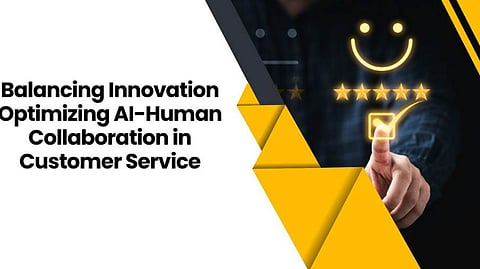

In this modern age, Chetan Manda, a customer experience technology expert, explores the transformative potential of AI-human collaboration in customer service. His work highlights how strategic integration of artificial intelligence with human expertise enhances service delivery, operational efficiency, and customer satisfaction. These collaborative frameworks empower organizations to streamline processes, foster innovation, and deliver consistently high-quality customer interactions globally. As businesses increasingly adapt to AI-driven solutions, a balance between automation and human empathy becomes crucial. His insights have been helpful in outlining strategies toward this balance with meaningful customer engagement and operational success.
The adoption of artificial intelligence in customer service environments has transitioned from straightforward automation and delegation of tasks into comprehensive collaborative systems. Through intelligent routing systems and adaptive learning mechanisms, organizations can effectively manage resources and ensure more prompt responding to customer queries. The AI-based frameworks indicated a 36.5% decrease in the time to handle an escalated ticket and showed a 31% increase in agent-task matching efficiency leading toward smooth operations, better customer alignment, and improved overall quality of service.
The core aspect of this partnership is intelligent routing, wherein AI processes and categorizes customer queries according to complexity, urgency, and specific context. These systems, powered by advanced machine learning algorithms, obtain rates of classification accuracy amounting to 91.7%, and thus automate simpler tasks and preserve human agents for more complex cases, which can only be resolved with empathy and through critical reasoning. This further not only improves resource utilization but also customer experience through alignment of queries with most suitable resolution paths for optimum outcome and quicker resolutions.
The AI-human collaboration is dependent largely on the knowledge-sharing frameworks of real-time for bridging the information gaps to enhance overall effectiveness in decision making. The structured architectures help retrieve data in an accelerated manner, ensuring consistency between systems to maintain smooth operations across all levels of service. For example, these systems ensure an average query response time of less than 200 milliseconds, which enables agents to provide more accurate and timely solutions with increased confidence and reliability. Organizations thus achieve a 52% improvement in first-contact resolution rates while fostering a more collaborative and empowered work environment that benefits everyone.
Adaptive learning mechanisms are an innovation in the domain of customer service so that systems can learn continuously to become more efficient and scalable. Such sophisticated systems can optimize algorithms using real-time feedback to improve performance with respect to new challenges and operational needs. With such innovations, 45% first contact resolution rates in the organizations increase, while the average handling time is reduced by 33% across the segments. This continuous learning capability not only improves efficiency but also reduces the operational costs to up to 28%, therefore ensuring long-term sustainable growth and operational excellence.
Huge amounts and quantifiable measurements result in AI-human collaboration frameworks. This can result in an improvement in the agent's productivity, wherein the higher groups see much bigger benefits than other organizations, where 47% improvements were documented. A great boost to First Contact Resolution shows 59%, further building satisfaction and trust through improved customer relationship, wherein there was an average of 27-point increases of NPS which validate why strategy has taken these new and present market battles of competitiveness as necessary for firms these days.
Organizations must implement a phased approach in order to gain the best possible results. Initially, it must focus on those departments that have clear use cases and measurable outcomes. Training programs and feedback loops are also necessary to maintain system accuracy, agent confidence, and adaptability. Clear role delineation ensures that AI handles routine tasks efficiently while human agents handle complex, empathetic interactions. These best practices result in a 67% increase in scalability during peak demand periods without sacrificing quality or responsiveness to services.
AI-human collaboration will remain a cornerstone of service excellence and innovation as customer expectations continue to evolve. Adaptive systems, real-time analytics, and structured workflows allow organizations to create dynamic, responsive environments, capable of addressing a wide range of needs. These innovations drive not only efficiency on the operational level but also amplify the human element in customer service, where some differences culminate in a deep sense of connection, trust, and long-term loyalty through consistently provided, high-quality support.
In conclusion, Chetan Manda's research underlines the transformative potential of AI-human collaboration in customer service environments. Throughstrategicintegrationof AI technologies with human expertise, organizations can achieve unparalleled efficiency and customer satisfaction across diverse industries. As these systems continue to evolve, they will set new benchmarks for innovation, ensuring that customer service remains both empathetic and efficient in an increasingly digital world. These insights pave the way for redefining service excellence and fostering meaningful customer relationships globally.
